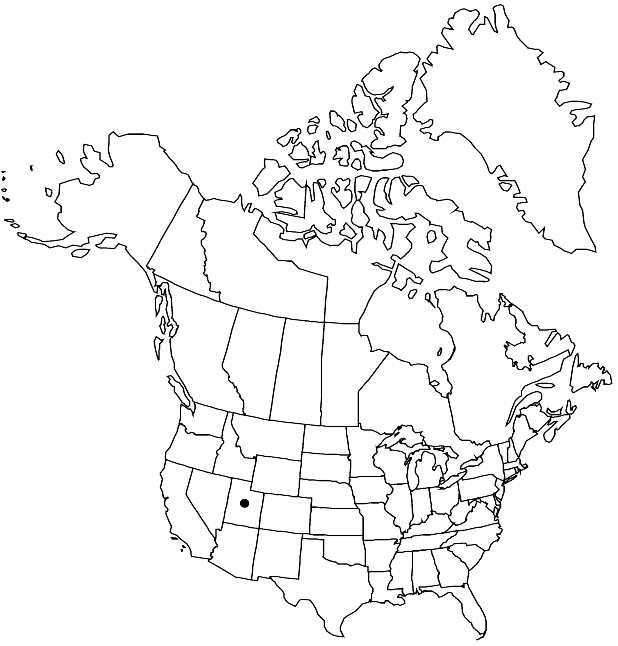Difference between revisions of "Physaria garrettii"
Novon 12: 323. 2002.
FNA>Volume Importer |
FNA>Volume Importer |
Revision as of 20:20, 24 September 2019
Perennials; caudex simple or branched; densely pubescent, trichomes (sessile), 4–7-rayed, rays furcate or bifurcate, (smooth or, rarely, finely tuberculate). Stems simple or several from base, spreading, (unbranched, sparsely pubescent), to 1.5 dm. Basal leaves: blade narrowly elliptic or obovate, 1–3(–4) cm, margins entire or nearly so. Cauline leaves (sessile or shortly petiolate); blade narrowly obovate or oblanceolate, 0.4–1.2 cm, margins entire. Racemes loose, (few-flowered). Fruiting pedicels (spreading, straight or slightly curved), 4–7 mm. Flowers: sepals linear, lanceolate, or elliptic, 3.5–6.5 mm, (median pair thickened apically, cucullate); petals oblanceolate, 5.5–9(–10) mm. Fruits globose or subglobose, not or slightly compressed, 3.5–4.3 mm; valves densely pubescent, trichomes spreading, 3–6-rayed, (appearing shaggy); ovules 4–8 per ovary; style 4.5–7 mm. Seeds slightly flattened, (suborbicular).
Phenology: Flowering Jun–Aug.
Habitat: Rock crevices, rocky slopes, ridges
Elevation: 3000-3700 m
Discussion
Of conservation concern.
Physaria garrettii is known from the area of the Wasatch Mountains.
Selected References
None.
